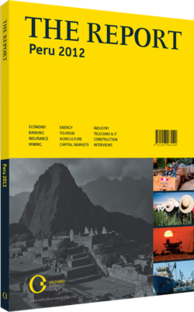Javier Tovar Gil, Partner, Estudio Echecopar, on regulatory stability

I made a presentation to a group of potential private investors from Asia 15 years ago when they were exploring business opportunities in Latin America and had concerns about Peru’s regulatory framework and legal stability, especially the rules governing foreign investor rights. At that time, our legal economic framework had recently been profoundly overhauled, based on the key concept of the state’s new role. The state abandoned direct entrepreneurship and economic intervention to focus on regulation and social investment.
I addressed many sectors and industries, providing a passionate description of the market-oriented reforms that had taken place in our country. I emphasised how the government’s role had changed dramatically since it adopted a regulatory rather than an entrepreneurial approach. I pointed out how the Peruvian Constitution had created very clear standards and guarantees, including equal treatment to all investors, free capital flows and free initiative, in line with private company promotion. I also highlighted the creation of professional regulators for the telecoms, energy, electricity and transportation infrastructure sectors; how contracts were protected by Article 62 of the new constitution; the real autonomy of the central bank and many other issues in our brand new legal structure.
Three hours later, after an exhausting round of questions, the group leader said, “Very well done! We will return in about 10 years. You are right – long-term investment requires long-term rules to achieve predictability. Your description is impressive. Peru has put in place a state-of-the-art regulatory framework but we are not sure if it will be sustainable. Time will tell.”
I was frustrated with the answer, but the truth was that we could not show a record of proven consistency on the legal front. We did it by the book but that was not enough. We had no way of refuting the group leader’s statement. “See you then,” I replied.
Since that presentation, 15 years ago, many things have happened. In the political arena, there have been three elections, none free from political turmoil and moments of uncertainty, some of them quite dramatic. Since my presentation, we have had four presidents coming from four different parties, with different views and programmes covering the political spectrum, from centre right to left, with completely different styles and messages. The composition of our parliament and other institutions, our regulators and our central bank have changed in accordance with the law and time.
Meanwhile, regardless of the party in power, our country has enjoyed economic growth, private investment has flourished, successive governments have perfected public-private partnership (PPP) schemes and fiscal soundness has been maintained, as the 1993 constitution mandates. Private pension funds have channelled an unprecedented amount of national savings, promoting the development of a local capital market. On the commercial side, Peru has entered into an impressive number of free trade agreements, including with the US and China. An APEC summit was held in Lima, and extreme poverty has been reduced.
However, some very important pending issues are still on the table, despite relevant progress. We suffer a severe infrastructure gap that may obstruct growth and create bottlenecks in the near future (although the government has announced an ambitious programme of concessions and other PPPs). Also, education and health care are still far away from an optimum standard and there is much to be done. From a lawyer’s perspective, our practice is somewhat difficult due since our judicial branch is considered unreliable and inefficient. Arbitration helps, but we need a long-term solution to create the creditworthiness we need.
But 15 years on, more importantly, there is something that has not changed: Our legal framework is essentially the same, despite all the political events and the different emphases governments have given to certain matters. Our principles, laws, regulations and the constitution have all endured the test of time. Today, Peru can offer investors a proven record of consistent stability with the rules of the game. Time can tell now.
You have reached the limit of premium articles you can view for free.
Choose from the options below to purchase print or digital editions of our Reports. You can also purchase a website subscription giving you unlimited access to all of our Reports online for 12 months.
If you have already purchased this Report or have a website subscription, please login to continue.

